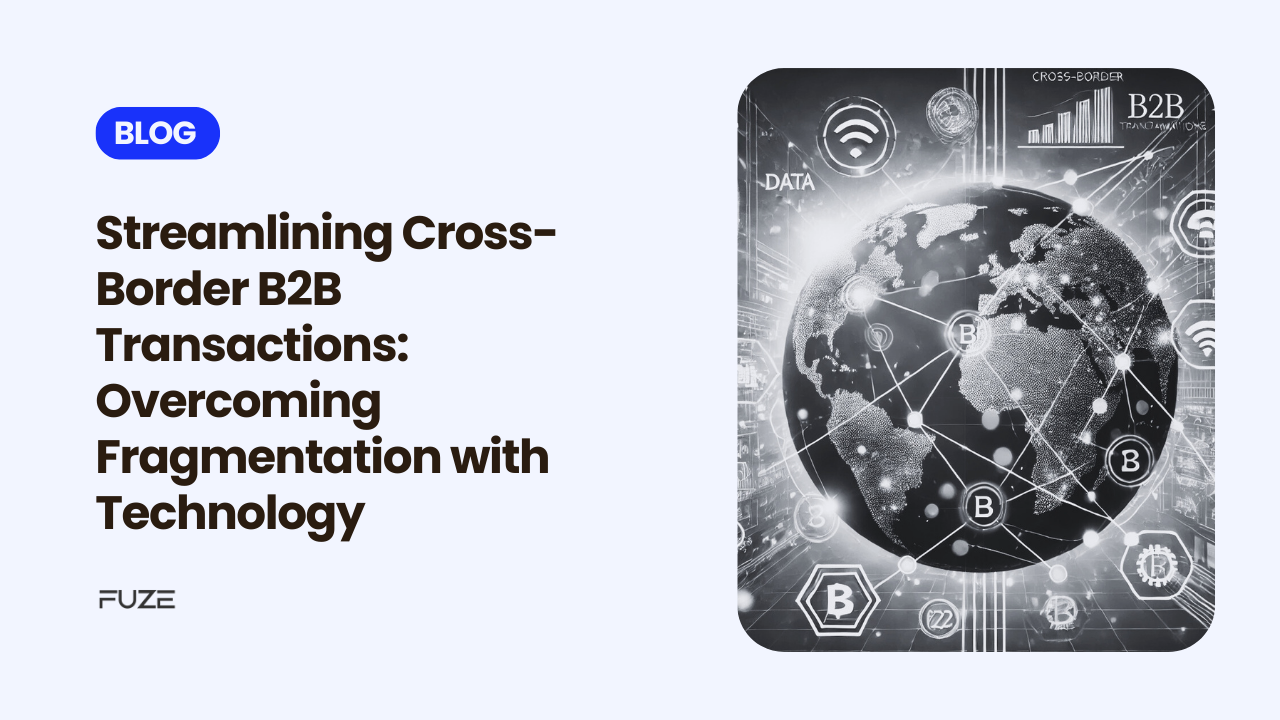Cross-border transactions are the heart of modern-day business in today’s globalized economy. From multinational corporations to small and medium enterprises (SMEs), businesses heavily rely on international payments to manage supply chains, pay overseas partners, and expand into new markets. Yet, despite the growth in global trade, the traditional systems for cross-border transactions remain riddled with inefficiencies and challenges, including high costs, slow processing times, and a lack of transparency.
Emerging technologies are stepping in to address these pain points, offering solutions that can revolutionize the way businesses handle international payments. This blog explores the complexities of cross-border B2B payments, the technological innovations transforming the landscape, and how businesses can harness these tools to streamline operations.
The Challenges of Cross-Border B2B Transactions
Cross-border B2B payments face unique challenges due to the complexities of operating across different countries, currencies, and financial regulations. Key issues include:
- High Transaction Costs
Traditional banking systems often charge significant fees for international transactions, including currency conversion, intermediary bank fees, and SWIFT charges. These costs can be prohibitive for SMEs operating on thin margins. - Slow Processing Times
International transactions can take several days to clear due to the involvement of multiple intermediaries, including correspondent banks. This delay impacts cash flow and operational efficiency, especially for businesses relying on just-in-time supply chains. - Lack of Transparency
Traditional systems allow very low visibility on payments, leading to difficulties tracking the flows. This lack of transparency may lead to error or a dispute. - Currency Volatility
Fluctuations in exchange rates can erode the value of payments, creating unpredictability for businesses operating in multiple currencies. - Regulatory and Compliance Barriers
Cross-border transactions must adhere to diverse regulatory frameworks, creating complexity and increasing the risk of non-compliance.
Technology as the Solution
Emerging technologies are tackling these challenges head-on, providing innovative solutions to streamline cross-border B2B transactions.
Blockchain Technology
Blockchain offers a decentralized ledger system that enables secure, transparent, and near-instant transactions. Key benefits include:
- Cost Reduction: By eliminating intermediaries, blockchain significantly reduces transaction fees.
- Speed: Transactions settle in minutes rather than days.
- Transparency: Every transaction is recorded on an immutable ledger, improving traceability and reducing disputes.
Real-Time Payment Systems (RTP)
RTP networks enable immediate clearing and settlement of funds, improving cash flow for businesses. Many countries are adopting RTP systems, such as the Faster Payments Service (FPS) in the UK and India’s Immediate Payment Service (IMPS).
Application Programming Interfaces (APIs)
APIs allow businesses to integrate payment solutions directly into their systems, creating a seamless payment experience. Key advantages include:
- Customization: Tailored payment workflows that suit business needs.
- Scalability: Easy integration with existing enterprise resource planning (ERP) systems and platforms.
- Real-Time Data: APIs provide instant insights into payment statuses and transaction histories.
Artificial Intelligence and Machine Learning (AI/ML)
AI/ML tools optimize cross-border transactions by analyzing historical data to predict currency trends, detect fraud, and ensure compliance with regulations. These technologies enhance efficiency while reducing risk.
Multi-Currency Digital Wallets
Digital wallets allow businesses to hold and transact in multiple currencies without the need for frequent conversions. This flexibility reduces exposure to currency volatility and streamlines operations.
Benefits of Streamlining Cross-Border B2B Transactions
With these technologies, businesses can tap into considerable benefits:
Cost Savings
Less expensive fees and reduced reliance on middlemen enable businesses to save money on each transaction.
Improved Liquidity
Shorter settlement times allow businesses to access funds more rapidly, improving liquidity and efficiency.
Increased Transparency
Real-time tracking and visibility into the payment process reduce errors, disputes, and fraud.
Universal Accessibility
Businesses expand with streamlined payment solutions to new markets without a lot of friction, bringing forth growth and competitiveness.
Compliance with regulations
Advanced technologies ensure adherence to local and international regulations, reducing the risk of penalties and delays.
Real-World Applications
SMEs Expanding Internationally
A small e-commerce company sourcing products from multiple countries can use blockchain and APIs to pay suppliers in real-time, cutting costs and avoiding delays.
Multinational Corporations
A large corporation with global operations can adopt crypto payment platforms to optimize treasury management, predict currency risks, and improve overall financial efficiency.
Financial Institutions
Banks can integrate digital wallets and blockchain-based systems to offer cost-effective, real-time cross-border payment services to their clients, enhancing customer satisfaction and retention.
Steps to Adopt Technology for Cross-Border Payments
- Assess Your Needs: Identify pain points in your current payment process and prioritize features that address these challenges.
- Choose the Right Provider: Partner with a payment service provider that offers innovative solutions tailored to your industry.
- Integrate with Existing Systems: Use APIs and customizable platforms to ensure seamless integration with your ERP or accounting software.
- Ensure Security and Compliance: Work with providers that prioritize data security and regulatory adherence.
- Train Your Team: Educate your finance and operations teams on the new systems to ensure smooth adoption.
Conclusion
The fragmentation in cross-border B2B transactions has long been a barrier to efficient global trade. However, emerging technologies such as blockchain, RTP, APIs, and AI are revolutionizing the landscape, offering faster, cheaper, and more transparent payment solutions.
For businesses, financial institutions, and banks, the message is clear: investing in innovative payment technologies is no longer optional—it’s essential for staying competitive in the global market. By embracing these tools today, businesses can position themselves for success in an increasingly interconnected world.
Reach out to Fuze to explore how our cutting-edge payment solutions can help you streamline your cross-border transactions and drive growth.
Disclaimer: Virtual assets carry significant risks, including high volatility and potential loss of your entire investment. They are not backed by governmental protections, and recourse may be limited in case of loss. Always assess your risk tolerance, fully understand the risks, and seek independent financial advice if needed before investing.
Frequently Asked Questions
-
How do APIs contribute to overcoming payment fragmentation?
APIs enable seamless communication between financial institutions and businesses. They simplify processes like currency conversion, real-time payment tracking, and integration with ERP systems.
-
What are the benefits of digital wallets in cross-border B2B transactions?
Digital wallets facilitate faster and secure payments, reducing reliance on traditional banking infrastructure and eliminating exchange rate complexities in cross-border transactions.
-
What compliance challenges do businesses face in cross-border payments, and how can technology help?
Cross-border payments must comply with AML, KYC, and tax regulations. Technology solutions, including AI and machine learning, streamline compliance checks, minimizing risks of penalties and fraud.
-
How do real-time payment systems transform cross-border B2B transactions?
Real-time payment systems eliminate delays caused by traditional banking hours and time zone differences, ensuring businesses receive funds instantly, improving cash flow management.
-
What cost savings can businesses achieve with streamlined cross-border payments?
By eliminating intermediaries and leveraging blockchain or digital payment systems, businesses can save up to 30%-50% on transaction fees and administrative costs.







